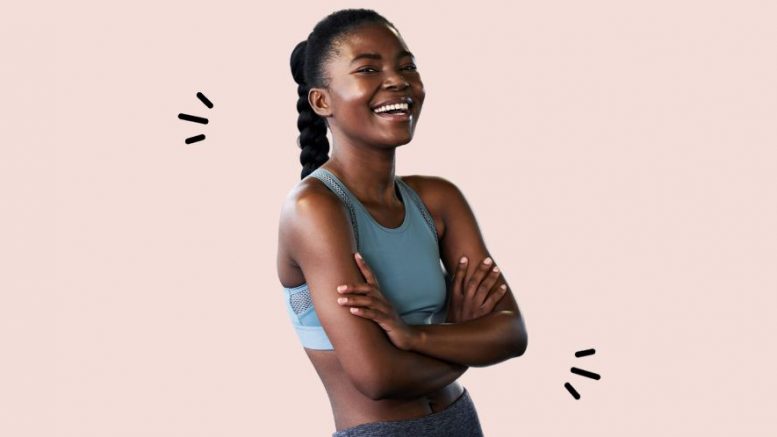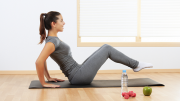This summer was the summer that I finally got on track toward my fitness goals. Here is a quick easy guide of useful things to know when starting off at the gym. This information is based on my own experience and personal research and from conversations with experienced “gym rats.”
- Join a gym
- Start off by joining an affordable, smaller-scale gym like Planet Fitness.
- Other options include: your school gym, local recreation centers, or at-home dumbbell workouts.
- If you feel you’ve outgrown your initial gym and see it as a worthy investment, consider looking at other larger gyms (e.g. LA Fitness, Vasa Fitness, Lifetime, or non-commercial gyms) that have more to offer like additional machines, free weights, basketball courts, swimming pool, classes, and/or personal trainer services.
- Set your goals
- Determine what you aim to achieve
- Are you training to get leaner, stronger, bigger, healthier, etc.?
- Determine how often you WANT and realistically CAN go to the gym on a weekly basis.
- Come up with a way to keep yourself accountable. Some ways to do that include:
- Schedule your workouts on your calendar.
- Get a friend/family member to go with you consistently.
- Some also find it helpful to document their fitness journey online by posting their progress on platforms like TikTok or by creating a private story on Snapchat for their friends to see.
- Determine what you aim to achieve
- Set up a gym bag
- Depending on what you need/use, get a drawstring bag, athletic backpack, or duffle bag
- General things to keep in your bag include: a shaker/water bottle, headphones/earphones/earbuds, a combination lock for the locker room, supplements/pre-workout, deodorant, hair ties (for long hair), athletic/lifting shoes, and extra pair of socks
- If you shower at the gym, pack a towel, necessary toiletries, extra change of clothes, and shower flip-flops or something of the like.
- Other potentially useful belongings include: a phone charger/power bank and chapstick.
- Develop a routine
- List the days of the week and the muscle group you want to work that day (e.g. “Monday: bicep/tricep”, “Tuesday: chest/shoulders” etc. )
- Search up existing routines and put together a list of workouts you want to try (Tiktok and Instagram influencers can be a good resource).
- Stick to the routine!
- If for some reason you miss a day at the gym, move on according to your weekly schedule. It’s harder to build the habit and stay consistent if you push back your routine to make up for the day missed.
- Eat for gains
- To grow and support your gains, you should consume 0.5–0.8 grams of protein per pound (lb) of (lean) body weight every day. The daily recommended intake is 50 grams of protein, so you should be consuming more than that for muscle building.
- Be sure to have at least three (3) healthy well-balanced meals each day. One of my go-to meals is chicken/salmon with a bed of white rice and steamed veggies.
- Meal-prepping can be life-changing; it’s a simple, easy, and convenient thing to do for yourself, especially as a student.
- Make sure you have eaten before going to the gym but leave at least an hour in between eating and working out so that your performance isn’t impacted in the gym by feeling “full” or getting nauseous. In my experience, not eating before the gym and lifting heavy may make you feel lightheaded/dizzy or tired and weak.
- Protein shakes after workouts and throughout the day are great! You can find protein powder or non-dairy protein shakes at supplement stores like GNC or you can also find them in stores like Walmart, Costco, and Amazon.
- According to experienced bodybuilders, one should consume protein within 30 minutes of working out for maximum results.
- Other Tips
- Stimulants/supplements
- Pre-workout refers to high stimulant dietary supplements for athletes that give you energy, increase focus on mind-muscle connection, maximizes pump, and promote strength, endurance, and muscle growth. Typically you should take pre-workout 15–30 minutes prior to your workout.
- Creatine is a highly recommended supplement across the gym community because it is a very safe and effective way to significantly increase muscle mass, strength, and performance in the gym.
- Equipment
- Oftentimes, getting equipment like gloves/grippers (to protect your hands), a foam bar pad (to improve comfort), and a belt (for safety) would be ideal.
- Stimulants/supplements
Hopefully, the information offered in this article left you feeling more knowledgeable about getting started in the gym. Keep in mind that this article was NOT written by a fitness/health professional and should not be treated as such. It is very important that you conduct your own research before anything.






Be the first to comment on "A Beginner’s Guide to Getting Serious in the Gym"